Hair Loss
Throughout history, a person’s hair has commonly been referred to as their “crowning glory.” Hair has always been an important aspect of a person’s appearance, and often seen as a symbol of youth, desirability and vitality. Early intervention and treatment may help to prevent further hair loss.
Common signs and symptoms of hair loss include:
- Gradual thinning of hair on top of the head
- Circular or patchy bald spots
- Sudden loosening of hair when combing or washing it
- Full-body hair loss
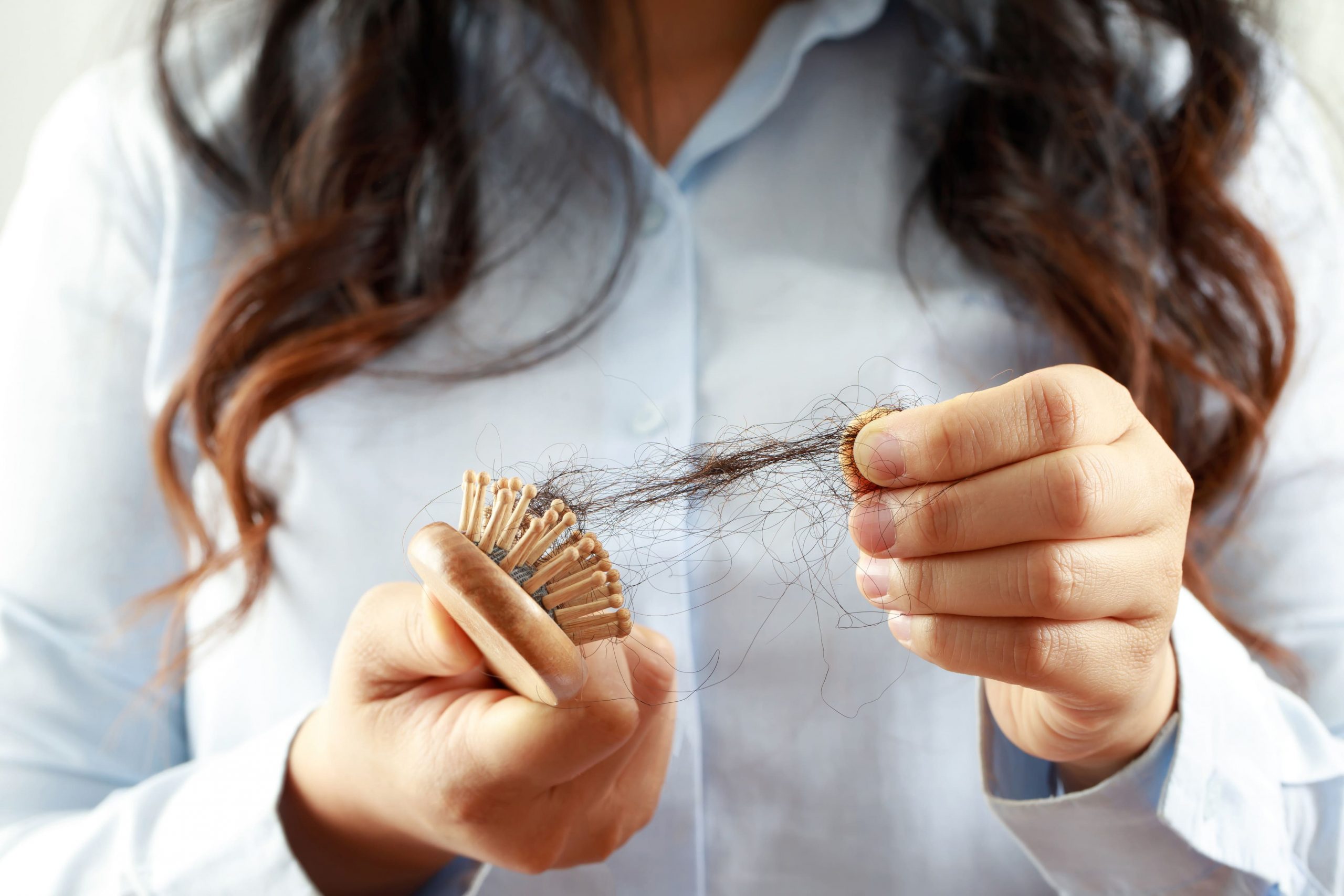

SUCCESS CASES
*Due to MOH guidelines in Singapore, medical clinics cannot show before & after photos on their websites. However, we would be delighted to showcase our photographs and actual results during your in-clinic consultation with us.
Our Doctors
VIEW ALL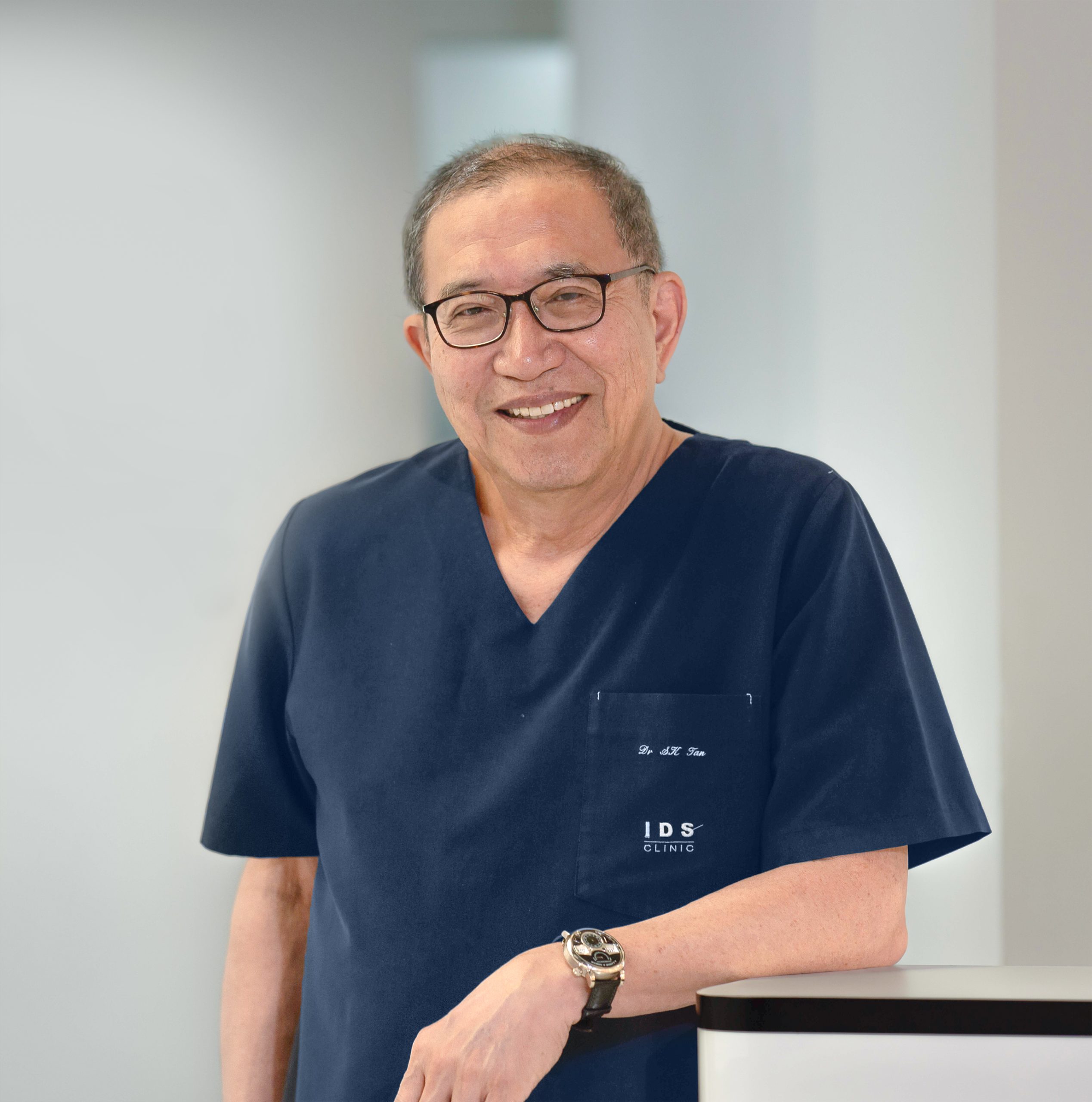
Dr. SK Tan
Special Interest
- Hyper-pigmentation
- Anti-Aging
- Acne
- Acne Scarring
- Ingredient Studies
Dr. SK Tan
Dr Tan graduated in 1971, with a Bachelors of Medicine (MB) and a Bachelors of Surgery (BS) from the University of Malaya. Dr Tan’s interest in dermatology led him to train at the St John’s Institute of Dermatology in London in the 1970s and he has since been focused in the field of aesthetic dermatology.
- MBBS
- Diploma in Venereology (University of London)
- Diploma in Dermatology (University of Wales)
- Diploma in Cosmetic Science (UK)
- Master of Business Administration
- Fellow of the American Academy of Dermatology (FAAD)
He is a member of numerous medical associations, including the American Academy of Dermatology, the International Society of Cosmetic Laser Surgeons, and the International Academy of Cosmetic Dermatology. Dr Tan was one of the first local doctors to be certified by the American Board of Anti-Aging Medicine. His personal interest in pigmentary disorders and acne has also led him to become an International Member of the Pigmentary Disorders Society of India, the Asian Society of Pigment Cell Research, and the American Acne and Rosacea Society (AARS).
Dr Tan’s work has led him to be invited to speak at numerous international conferences in the US, Europe and throughout the Asia Pacific region. He is a co-editor of “Handbook of Cosmetic Microbiology”, a reference book published by Marcel Dekker, and his papers have been published in the Journal of Cosmetic Dermatology, International Journal of Dermatology, Journal of the European Academy of Dermatology and Venereology, Journal of Cosmetic and Laser Therapy, and Expert Review of Dermatology, and has contributed a chapter in the reference book ‘Pigmentary Disorders: A Comprehensive Compendium’.
Special Interest
- Hyper-pigmentation
- Anti-Aging
- Acne
- Acne Scarring
- Ingredient Studies
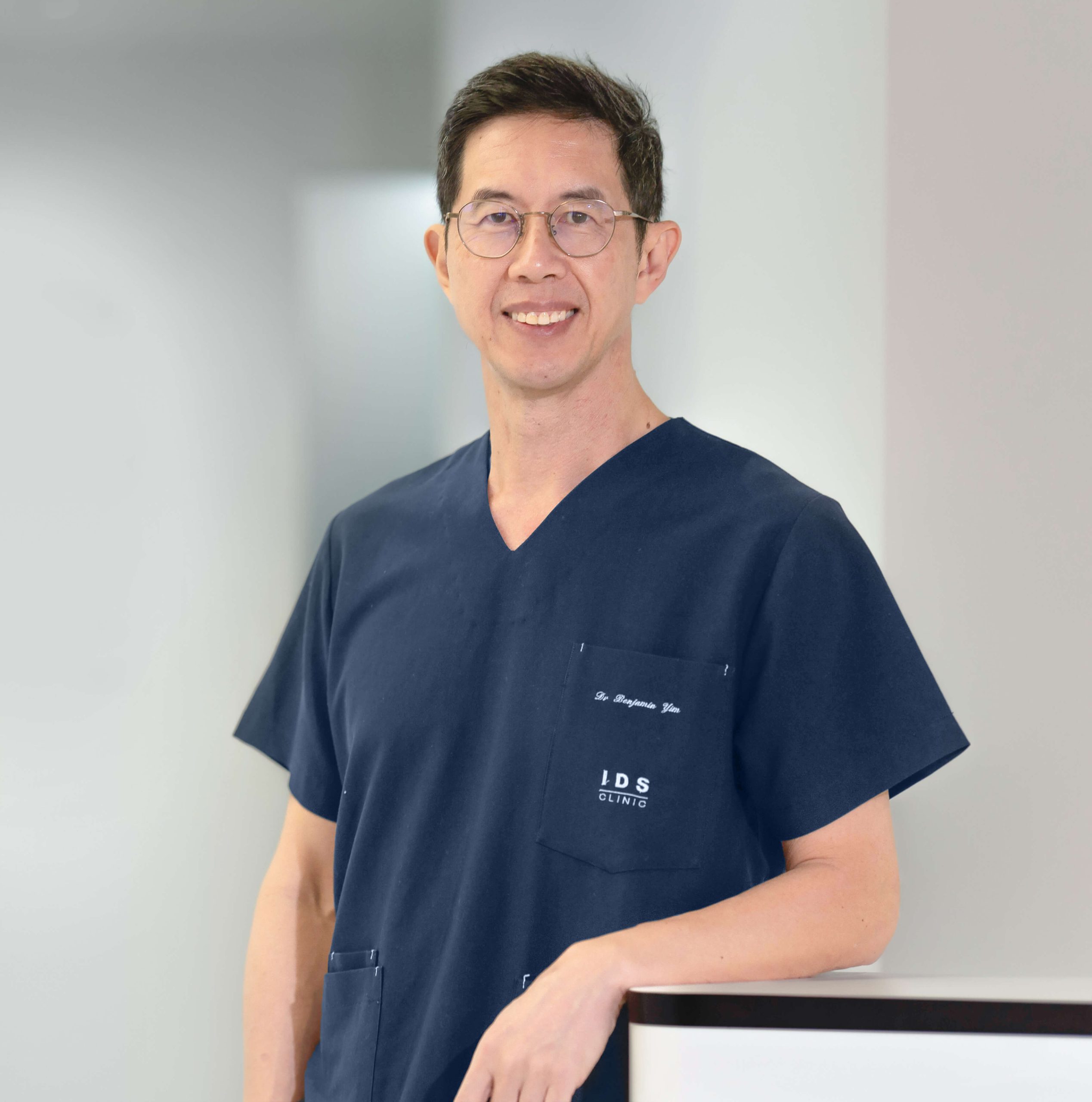
Dr. Ben Yim
Special Interest
- Anti-aging
- Hyper-pigmentation
- Body-Contouring
- Fat Reduction
Dr. Ben Yim
Dr Yim graduated from Monash University in Australia with a Bachelor of Medicine and Bachelor of Surgery degree. He has also earned a Master of Science in Clinical Dermatology from the University of London and more recently in Non-Surgical Facial Aesthetics from Anglia Ruskin University in UK, as well as a Graduate Diploma in Family Physicians in National University of Singapore.
- M.B.B.S (Monash University) 1994
- Diploma Practical Dermatology (University of Wales College of Medicine) 1998
- MSc. Clinical Dermatology (University of London) 1999
- MBA (University of Chicago) 2011
- MSc Non-Surgical Facial Aesthetics (Anglia Ruskin) 2018
- GDFM (NUS) 2019
Dr Yim has been practicing aesthetic medicine in private practice since 2000. The former director of Clinical Aesthetics & Laser Centre has been offering a wide armamentarium of aesthetic services including Botulinum Toxins, fillers for facial enhancement, skin tightening, fractional lasers, threadlifts, and non-invasive body contouring treatments.
As a trainer for Allergan Medical Institute in Singapore, Dr Yim has been invited to speak and train for numerous aesthetic workshops and conferences including “The Advanced Facial Anatomy and Injectables Workshop”, Botulinum Toxins and Filler injectable training workshops organized by Allergan, “The Singapore Disease Conference 2008” and “1st International Conference on Healthcare Transformation 2008” and Forum for Professional Self-regulation jointly organized by the SingHealth Centre for Health Services Research and the NUS Medical Society, to name a few.
Dr Yim comes from a family of four doctors, all in private practice in family medicine. Despite the move into full-time aesthetic medicine, Dr Yim has also taken an interest in family medicine pursuing a Master degree in Medicine in Family Medicine in NUS in which he hopes to complete in 2020.
Outside of his profession, Dr Yim also actively participates in social projects such as tattoo laser removal for prison inmates and teenage delinquents. For leisure, he enjoys golf, reading, playing the piano and running – he has participated in several half-marathons.
Special Interest
- Anti-aging
- Hyper-pigmentation
- Body-Contouring
- Fat Reduction

Dr. Liz Lum YX
Special Interest
- Acne
- Acne Scarring
- Fillers
- Neurotoxin Injection - Botulinum Toxins
- Face Lifting
- Facial Slimming and Contouring
Dr. Liz Lum YX
Dr Liz Lum YX graduated from Trinity College in Dublin with a Bachelor of Medicine and Bachelor of Surgery degree. She has also earned a graduate diploma in aesthetic medicine with the American Academy of Aesthetic Medicine (AAAM). Apart from these, Dr Lum has also attained certification by the Ministry of Health accredited bodies under the Singapore Medical Council’s Aesthetics Dermatology Education Group for various aesthetics procedures. Before joining IDS, Dr Liz Lum YX was a surgical trainee with the hand surgery department in SGH.
- MBBCH BAO (Trinity College Dublin)
- Diploma in Aesthetic Medicine, American Academy of Aesthetic Medicine
- Accredited by the Aesthetic Practice Oversight Committee (Singapore Medical Council) for Certificates of Competence in Aesthetic Procedures
- Diploma in Cosmetic Science (UK)
Jean Cocteau once said, “If there is a defect in the soul, it cannot be corrected on the face; but if there is a defect on the face and one corrects it, it can correct a soul.”
For this reason, Dr Liz Lum YX has a special interest in acne treatment that dates back to times when she had to deal with her own acne problems and breakouts. This drove her to identify the need for innovative products and treatments to treat acne problems. She strongly believes that many acne prone patients will benefit from a combination of innovative dermatological products, lasers and medications.
Dr Liz Lum YX’s other interests include injectables such as botulinum toxins, fillers and laser treatments for pigmentary disorders. Outside of her profession, she enjoys travelling and spending quality time with her family, friends and loved ones over good meals, movies, and a cup of coffee.
Special Interest
- Acne
- Acne Scarring
- Fillers
- Neurotoxin Injection - Botulinum Toxins
- Face Lifting
- Facial Slimming and Contouring

Dr. Ian Tan
Special Interest
- Acne
- Anti-Aging
- Body Contouring
- Face Lifting
- Facial Slimming and Contouring
- Hair Regrowth
- Weight Management
Dr. Ian Tan
Dr Tan graduated from the National University of Singapore and is one of the few medical doctors selected to lead the Singapore National Healthcare Group surgical residency program. He had his basic years of training in various hospital surgical specialties and he obtained Membership of the Royal College of Surgeons of Edinburgh (General Surgery) in 2013.
- MBBS (Singapore)
- MRCS (Edinburgh)
- GDFM (Singapore)
- GDFP Dermatology (Singapore)
- Certificate in Aesthetic Medicine, Amercian Academy of Aesthetic Medicine
- Accredited by the Aesthetic Practice Oversight Committee (Singapore Medical Council) for Certificates of Competence in Aesthetic Procedures
- Diploma in Cosmetic Science (UK)
- Accredited Family Physician
- Basic Obesity Management Accreditation 2 (BOMA 2)
- Certificate Course in Andrology
Through his practice, he developed a keen clinical interest in dermatological conditions and has obtained a Diploma in Dermatology (FP) from NUS. Dr Tan aims to help his patients achieve beauty through science by using appropriate skincare, aesthetic procedures and lasers. He believes his experience in surgery will complement his work in aesthetic and dermatological procedures at the IDS clinic.
A former national, Dr Tan was an avid athlete during his college days and developed him in local and regional canoe competitions. Outside of his profession, he enjoys running and going to the gym.
Special Interest
- Acne
- Anti-Aging
- Body Contouring
- Face Lifting
- Facial Slimming and Contouring
- Hair Regrowth
- Weight Management

Dr. Michelle Wong
Special Interest
- Acne
- Acne Scarring
- Focused Ultrasound Lifting
- Skin Brightening
- Cryo based Treatment
Dr. Michelle Wong
Dr Michelle Wong graduated from The University of Melbourne, Australia with a Bachelors of Medicine, Bachelors of Surgery and Bachelors of Medical Science. She obtained her post-graduate Diploma in Clinical Dermatology with Distinction from the Queen Mary University of London, and holds a Diploma in Aesthetic Medicine with the American Academy of Aesthetic Medicine (AAAM).
- MBBS from The University of Melbourne, Australia
- Diploma in Clinical Dermatology from Queen Mary University of London
- Diploma in Aesthetics Medicine from American Academy of Aesthetic Medicine
- Diploma in Cosmetic Science (UK)
In aesthetics, Dr Wong believes she has discovered her ikigai – the intersection of what she is both good at and loves doing. Her preferred tools of the trade are injectables such as Botulinum Toxins & fillers, which she wields with finesse and intuition - often achieving what her patients desire but cannot express through words. Out of passion and interest, she regularly attends conferences and workshops, eager to learn about the latest treatments and techniques to further hone her craft.
Combining the science of medicine with the art of beauty, Dr Wong provides an honest consult to help her patients achieve their skincare and beauty goals. She believes in understated elegance – a focus on a less-is-more approach - and works to enhance her patients’ natural features whilst instilling self-confidence. Her reassuring and gentle approach puts patients at ease allowing her to achieve maximum results through safe and effective procedures.
In her free time, Dr Wong enjoys taking long walks with her dog at the park. Her family praises her inner domestic goddess that can whip up an impressive variety of home-cooked meals. She is also active in church medical missions and believes in contributing back to society through her God-given gifts and talents.
Special Interest
- Acne
- Acne Scarring
- Focused Ultrasound Lifting
- Skin Brightening
- Cryo based Treatment

Dr. Vivian Yong
Special Interest
- Acne
- Acne Scarring
- Fillers
- Neurotoxin Injection - Botulinum Toxins
- Face Lifting
- Facial Enhancement
Dr. Vivian Yong
Dr Vivian Yong graduated from National University of Singapore in 2006, and has an experience of more than 10 years in Aesthetics. She has also accumulated extensive surgical skills and experience from various rotations in general surgery, ophthalmology, and ENT.
- MBBS
- GDFM
Dr Vivian has always had a natural inclination towards science subjects and this led her into medicine. During her medical graduate days, she developed a keen interest in Aesthetics and Skincare, and she believes that Aesthetics is one area that allows her to help a patient achieve their ideal artistic expression based on science. While Dr Vivian is always keen to accommodate her patients’ needs, she ensures that their welfare remains the utmost priority. This is why Dr Vivian is loved by her patients for always being meticulous and attentive to details.
Dr Vivian’s eye for beauty goes beyond aesthetics. Outside the clinic, Dr Vivian loves to spend her time in leather crafting and jewelry making, transforming basics into beauty. She also loves spending her quiet time exercising in the gym or chilling at home with her loved one.
Special Interest
- Acne
- Acne Scarring
- Fillers
- Neurotoxin Injection - Botulinum Toxins
- Face Lifting
- Facial Enhancement

Dr. Sean Lim
Special Interest
- Acne
- Acne Scarring
- Fillers
- Neurotoxin Injection - Botulinum Toxins
- Face Lifting
- Facial Enhancement
Dr. Sean Lim
- MBBS (Singapore)
- Certified Personal Trainer
Dr Sean is a dedicated medical professional with a diverse background in procedural disciplines and holistic care. He graduated with an MBBS degree from the National University of Singapore, earning recognition on the Dean's List for his exemplary performance in his final year Professional Examination. Fully registered with the Singapore Medical Council (SMC), Dr Sean is also certified to perform aesthetic procedures by the Aesthetic Dermatology Educational Group (ADEG).
Beyond his clinical practice, Dr Sean actively engages in community service and leadership endeavours. He has contributed his medical expertise to humanitarian missions, including Naamjai Medical Missions trips to Thailand and a collaborative effort with plastic surgeons from NUH at Yangon's Defense Services General Hospital (DSGH).
Dr Sean's commitment to excellence extends beyond the medical field. As a former Singapore national athlete in pole vaulting, he has represented Singapore in numerous international competitions, earning accolades and setting records. Dr Sean’s passion for health and fitness is evident in his certification as a personal trainer and his dedication to maintaining an active lifestyle.
A proud new father, Dr Sean cherishes quality time with his family outside of work commitments, demonstrating a balanced approach to life and well-being. His belief in delivering quality care with a personal touch reflects his ethos as a compassionate healthcare provider.
Special Interest
- Acne
- Acne Scarring
- Fillers
- Neurotoxin Injection - Botulinum Toxins
- Face Lifting
- Facial Enhancement
Hair biology
Approximately 90 percent of the hair on a person’s scalp is growing at any one time and the growth phase varies between 2 to 6 years. 10 percent of the hair is in a resting phase that lasts 2 – 3 months. At the end of its resting stage, the hair is shed, and new hair from the same follicle replaces it and the cycle starts again. Scalp hair grows about 1cm per month, but the rate of hair growth slows as we age. Most hair shedding is due to a normal hair cycle, and losing 50 – 100 hairs per day is usually no cause for alarm.
Hormonal factors play a big role in the causation of hair loss. Testosterone is converted to dihydrotestosterone (DHT) by the enzyme 5-alpha reductase, and this has been found to be present in higher concentrations in the balding areas of the scalp. This is the hormone that is responsible for male sexual characteristics and, when the body converts it to DHT, it becomes the main culprit in causing baldness. Women have only half the amount of this enzyme overall as men and even less of this is present in the crown. In addition, women have higher levels of an enzyme called aromatase in all areas of the scalp that may block the formation of DHT. This enzyme is present in especially high concentration in the frontal hairline in women, possibly explaining why this area is fortunately resistant to balding in most females.


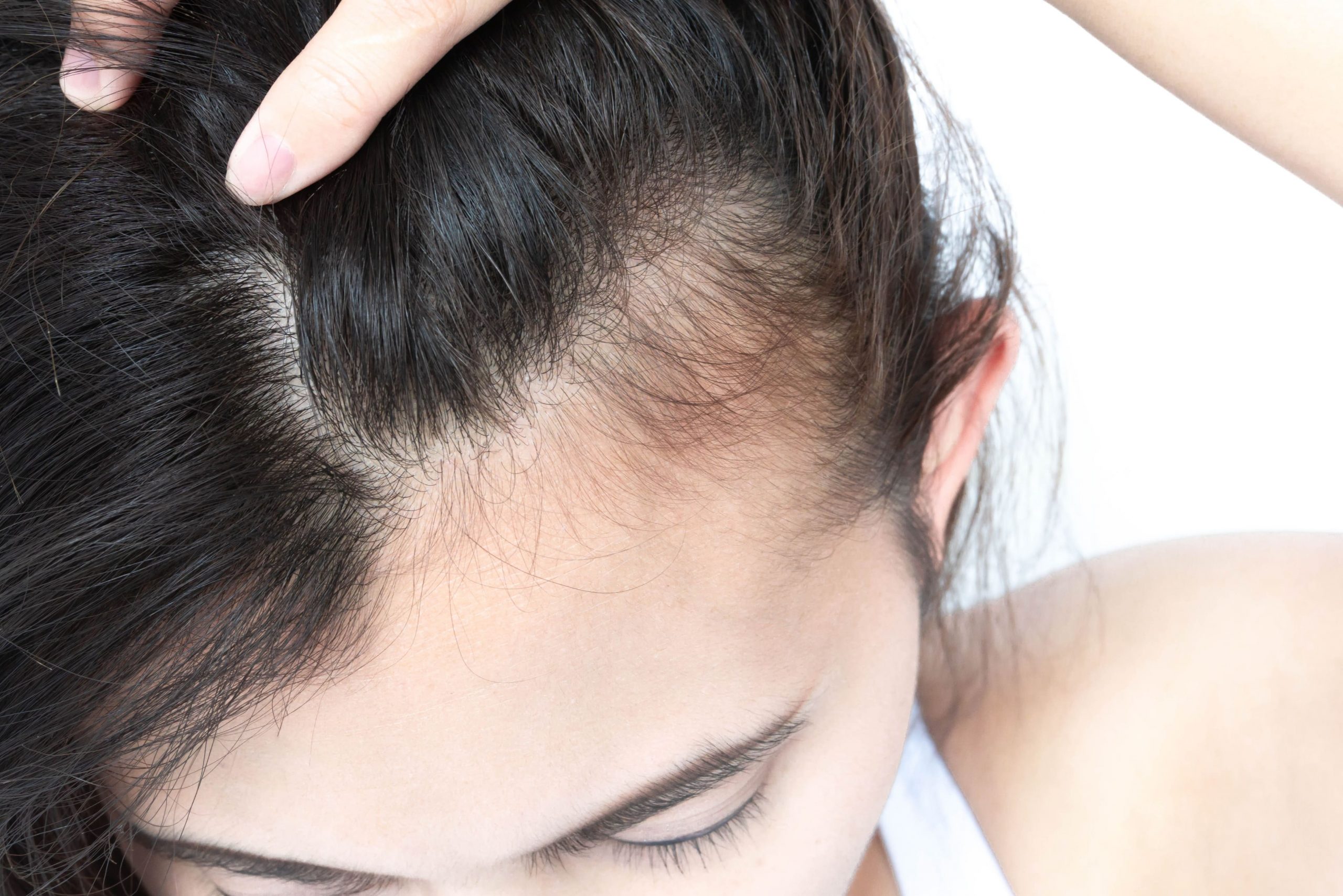

Types of hair loss
Hair loss can be a complex problem because there are a plethora of reasons that can cause excessive hair loss and it can broadly be categorised into localised vs diffused.
- Localised hair loss may be classified into scarring and non-scarring types: Non scarring type is typically caused by Alopecia Areata, an auto-immune disease which manifests itself with the sudden onset of round patches of hair loss associated with normal skin and can be treated with local injections of corticosteroids or immunotherapy. Scarring Alopecia can be caused by a variety of medical or dermatologic conditions such as Lupus and Lichen planus, infections or local radiation therapy.
- Diffuse Hair Loss: A common cause of diffuse hair loss in both men and women is genetic balding or “Androgenetic Alopecia”(AGA)In AGA, an excess of the androgen DHT causes hair follicles that were producing healthy terminal hairs to begin producing thinner, shorter, more brittle hairs with weaker shafts (this process is called miniaturization and the hairs involved are called miniaturized hairs). Eventually, these follicles produce only fine, almost invisible, short, vellus hairs, or they may die out altogether and close up.
What causes Hair Loss?
What causes Hair Loss?
A number of "non-androgenetic" factors may be responsible for hair loss especially in women. Women's hair seems to be particularly sensitive to underlying medical conditions. Other systemic issues may often cause a diffuse type of hair loss pattern that can be confused with AGA. Hence, it is important that diffused hair loss, be properly evaluated.

Conditions that cause hair loss
Among the many conditions that can cause hair loss, the most common ones are:
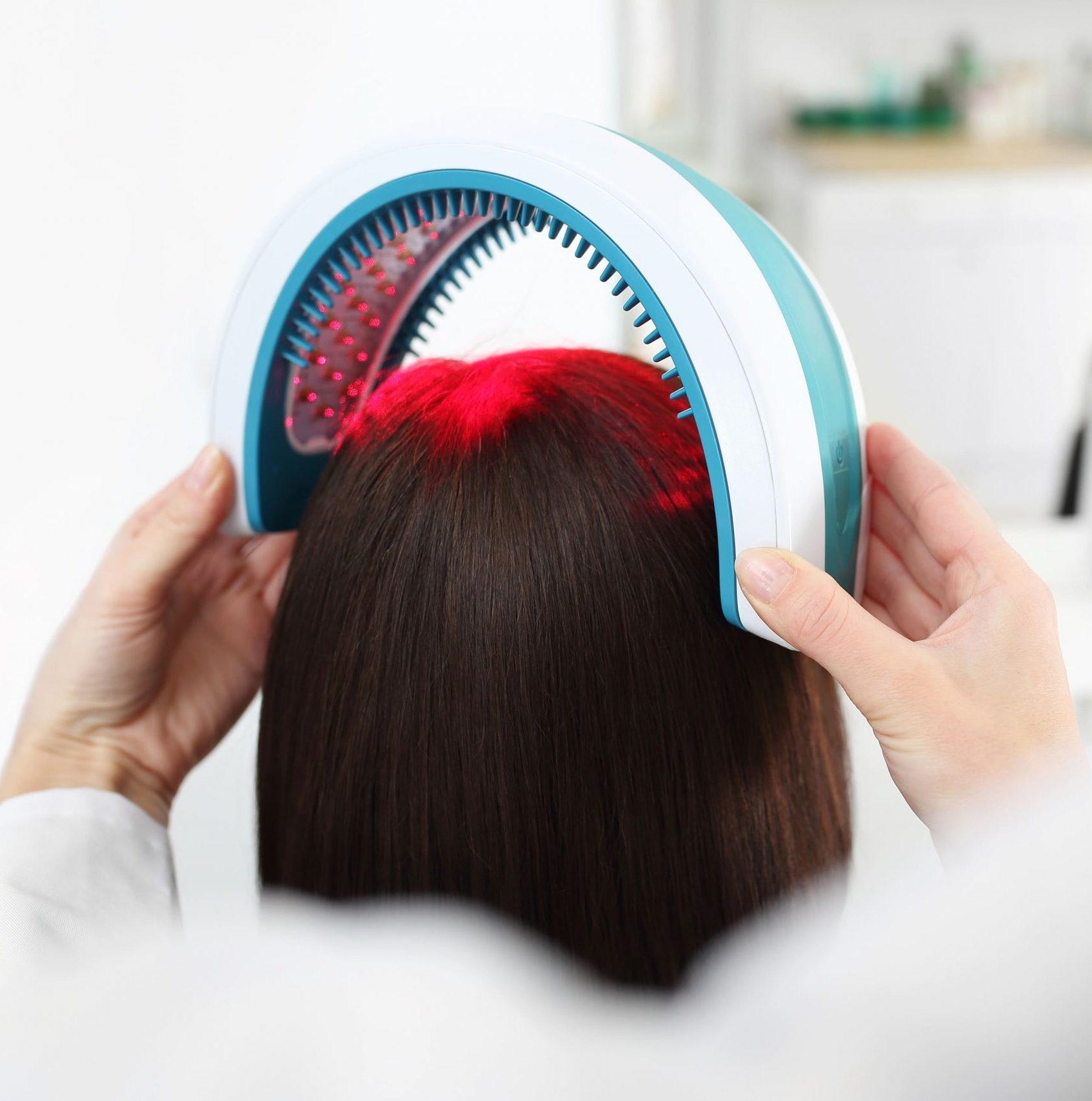
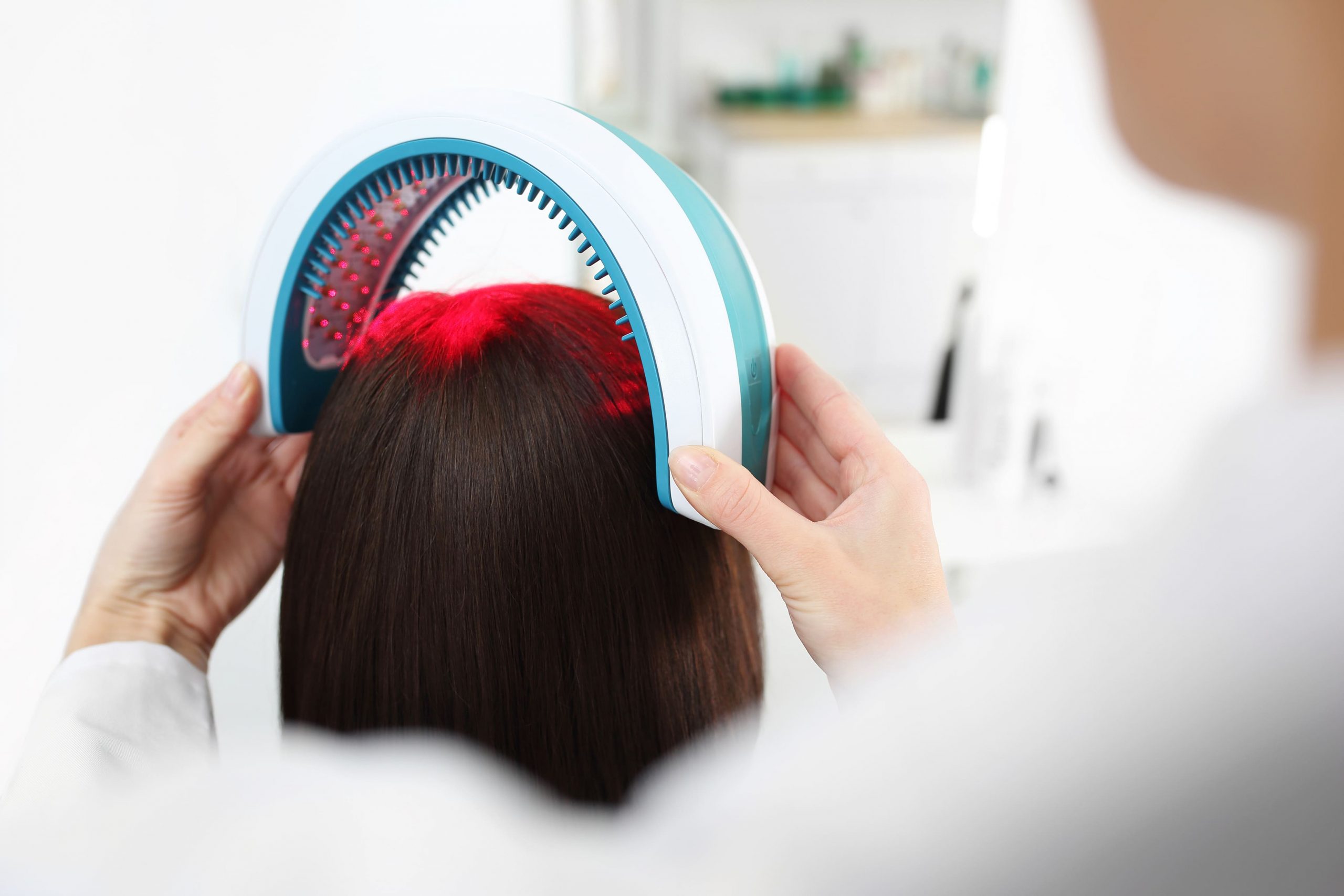
Treating hair loss
The first step to treatment is the accurate diagnosis of the hair loss. AGA is the commonest cause of hair loss but it is important to rule out other causes of hair loss and treat them accordingly. The first line of treatment for AGA is usually topical minoxidil and oral finasteride. Although these treatments have been shown to be effective, they may cause significant side effects too: scalp irritation in the case of minoxidil and sexual dysfunction in finasteride.
A combination approach provides faster and better results. This includes the use of minoxidil, finasteride, lasers and treatments that use Autologous Micrografting Technology®.
IDS Clinic seeks to provide the most suitable treatment plan for your hair condition.
Book AppointmentWe treat every problem in an
efficacious way.
Step into the world of aesthetic solutions built upon medical science.Where we integrate technology, artificial intelligence and complementary skincare to address the most common skin problems.
Quick Facts About Autologous Micrografting Technology® (AMT)
What is Autologous Micrografting Technology® (AMT)?
This technology is used by certain hair loss treatments that target AGA and hair thinning in both men and women. This is an effective technique which uses injectable micro capillary graft, which slows down the evolution of hair loss by immunomodulation, as well as promoting hair growth. The micrograft solution obtained with AMT has the required regenerative properties, such as chemotaxis, cell proliferation, and high angiogenic potential, to stimulate the other areas that are losing hair.
How do treatments that use (AMT) work?
In a single session, the patient is both a donor and recipient of their own autologous micro-grafts, allowing the recipient area to benefit from the regenerative activity of the progenitor cells and growth factors extracted from the donor site.
-
Step 1 — Harvest: After a local anaesthesia injection, 3-5 small biopsy samples (3mm) are extracted from the back of your scalp.
-
Step 2 — Extraction: The samples harvested are introduced into the Rigeneracon device and gently pressed against the microblades at a constant speed of 80 rpm, without damaging the cellular structure of the disaggregated tissue. After 2 - 4 minutes, injectable micro grafts are obtained, this comprise of: cells, extracellular matrix and growth factors derived from the patient's own cells, with no other manipulation than mechanical disaggregation.
-
Step 3 — Injection: Extracted micro-grafts are injected in a customised fashion to deliver optimal results at areas of greatest hair loss.
Who is suitable for treatments that use (AMT)?
-
Suitable for Men and Women looking to improve mild to moderate hair loss without the side-effects and risks of other treatment options.
-
Synergistic, compatible and recommended for patients who are already on other hair loss treatments.
-
Patients planned for hair transplant; as the procedure can strengthen their scalp before and/or after hair transplant.
-
NOT RECOMMENDED for patients who have an active infectious process in the scalp or has severe alopecia with extensive closure of the hair follicles.
Are there any side effects or downtime?
-
Discomfort during anaesthesia, harvest and injection of the micro-grafts
-
Small wounds with minimal bleeding at the harvest sites.
-
No downtime. Can go back to normal daily activities straight away but best to avoid swimming, excessive sun exposure to the scalp or strenuous physical activity for about 1 week.

